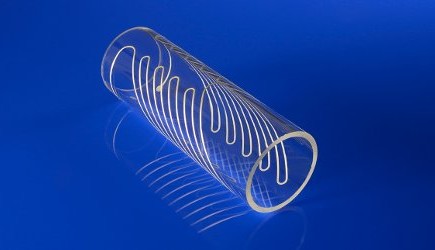Adding Electronic Functions To Everyday Objects

At the German Fraunhofer Institute, researchers have developed a system that can print circuits and sensors to flat and three-dimensional surfaces. The printer combines different processes such as silk-screen, inkjet, and aerosol-jet printing to equip components with entirely new properties.
The nascent technology of printed electronics will open up a whole new era of electronically enhanced objects. Smart features can be added to everyday products: building materials with integrated sensors to...
At the German Fraunhofer Institute, researchers have developed a system that can print circuits and sensors to flat and three-dimensional surfaces. The printer combines different processes such as silk-screen, inkjet, and aerosol-jet printing to equip components with entirely new properties.
The nascent technology of printed electronics will open up a whole new era of electronically enhanced objects. Smart features can be added to everyday products: building materials with integrated sensors to monitor their structural integrity, glass doubling as a solar panel, smart packaging for logistical tracking and monitoring of contents.
The novelty of the printing equipment coming out of the Fraunhofer Institute for Manufacturing Technology and Advanced Materials is its versatility. It can handle almost any material with various form factors and deposit electronic components of varying thickness and width. Several printing techniques are available to deposit different functional inks like metals, ceramics, electrically conductive polymers, and biomaterials such as proteins and enzymes.
That means that in a single process a flexible sheet of plastic can be printed with an extremely fine electronic circuit of 10 micrometers using aerosol-jet printing and a more course structure using inkjet techniques, producing different sensors and components in a single go. When the plastic sheet is finished a new design on the computer can tell the printer to start working on, say, a glass cylinder.
“The production line with its central robotic unit, component feeders, printing systems and heat treatment furnaces enables us to functionalize surfaces on a near-industrial scale,” says Dr. Volker Zöllmer, head of the Functional Structures department at IFAM.
The printer can process substrates of up to A3 size and several centimeters high.
Source: fraunhofer.de
The nascent technology of printed electronics will open up a whole new era of electronically enhanced objects. Smart features can be added to everyday products: building materials with integrated sensors to monitor their structural integrity, glass doubling as a solar panel, smart packaging for logistical tracking and monitoring of contents.
The novelty of the printing equipment coming out of the Fraunhofer Institute for Manufacturing Technology and Advanced Materials is its versatility. It can handle almost any material with various form factors and deposit electronic components of varying thickness and width. Several printing techniques are available to deposit different functional inks like metals, ceramics, electrically conductive polymers, and biomaterials such as proteins and enzymes.
That means that in a single process a flexible sheet of plastic can be printed with an extremely fine electronic circuit of 10 micrometers using aerosol-jet printing and a more course structure using inkjet techniques, producing different sensors and components in a single go. When the plastic sheet is finished a new design on the computer can tell the printer to start working on, say, a glass cylinder.
“The production line with its central robotic unit, component feeders, printing systems and heat treatment furnaces enables us to functionalize surfaces on a near-industrial scale,” says Dr. Volker Zöllmer, head of the Functional Structures department at IFAM.
The printer can process substrates of up to A3 size and several centimeters high.
Source: fraunhofer.de
